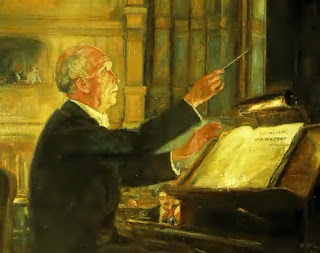 (...and I feel fine)
(...and I feel fine)A song parody by Paul J. Pelkonen
(based on "It's the End of the World As We Know It (and I feel fine)") by R.E.M., original lyrics by Michael Stipe, plot by Richard Wagner)
That's great it starts when the rope breaks, Norns quake and Erda sleeps on unafraid. Brunnhilde horse-dealin', Siegfried he's free-wheelin', going on to mighty deeds, think he's got a few leads, going down the river Rhine, with horse, (of course) sail against the current on a mighty boat, false note, going to the Gibichung, Gibichung hall! Brother, sister kissing in the castle with Hagen breathing down their neck. He's got a wicked plan with a notion in the potion that'll wipe his brain. Siegfried shows up takes a drink from the cup, slipped a mickey not lime rickey, uh oh blood flow
brüderschaft to the raft Hagen serves his own needs find out what in Act Three, thinkin' bout the Nibelung, Nibelung ring. You sons of freedom sail on gladly switch bitch not a hitch in the night Gunther gives a fright!
It's the end of the world as we know it,
It's the end of the world as we know it
It's the end of Act One as we know it, and I feel fine
Wake up Hagen sleepy head, Siggy's back, not dead, Hoi-ho! Cow horn Gunther boat re-turn, sacrifice to the gods, beer drinking, hell-raising, Got the bride eyes are wide don't get on her bad side, marriage problems escalate, world will annihilate, fingers on a spear point, he said, she said, plan a murder what's the motive Uh-oh this means no fear, cavalier, next day with the spear, stab him in the, stab him in the, stab him in the back! Murder by the river death scene takes forever is he dead yet?
It's the end of the world as we know it.
It's the end of the world as we know it.
It's the end of Act Two as we know it and I feel fine.
Brunnhilde by the Rhine build a fire, pyre time.
Hagen commits regicide, Dead man's hand? Nein!, Time for immolation scene, Wotan
auf wieder-zeen Burn the castle flood the river, Valhalla boom!
Immolate, annihilate, regenerate. Late? Late!
It's the end of the world as we know it.
(Time for Gö-tter-däm-merung)
It's the end of the world as we know it.
(Let's watch Gö-tter-däm-merung)
It's the end of the world as we know it
(Everybody Gö-tter-däm-merung)
and I feel fine...fine...





























